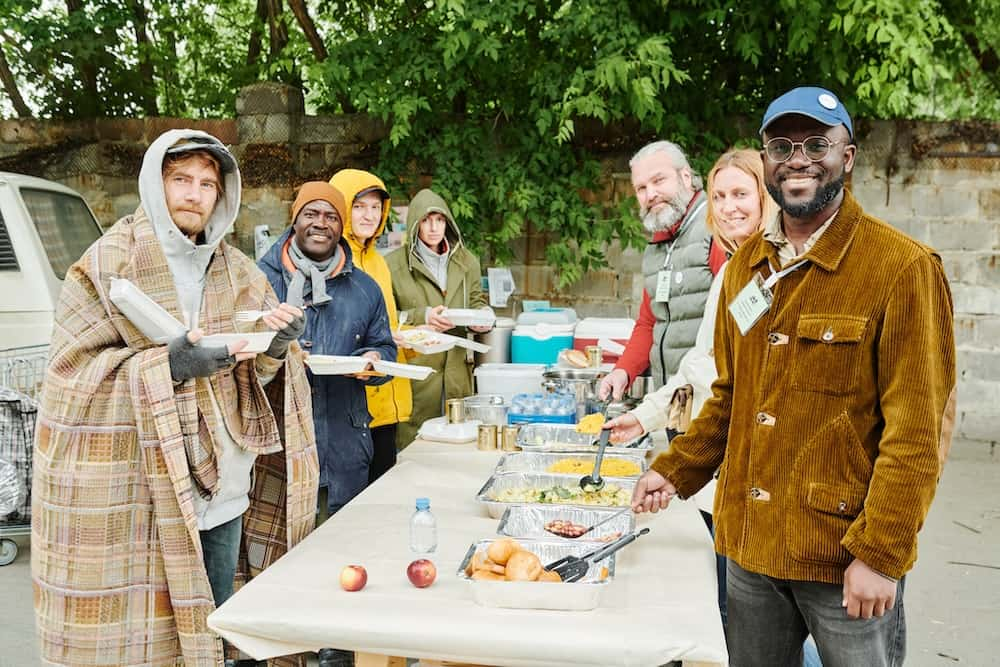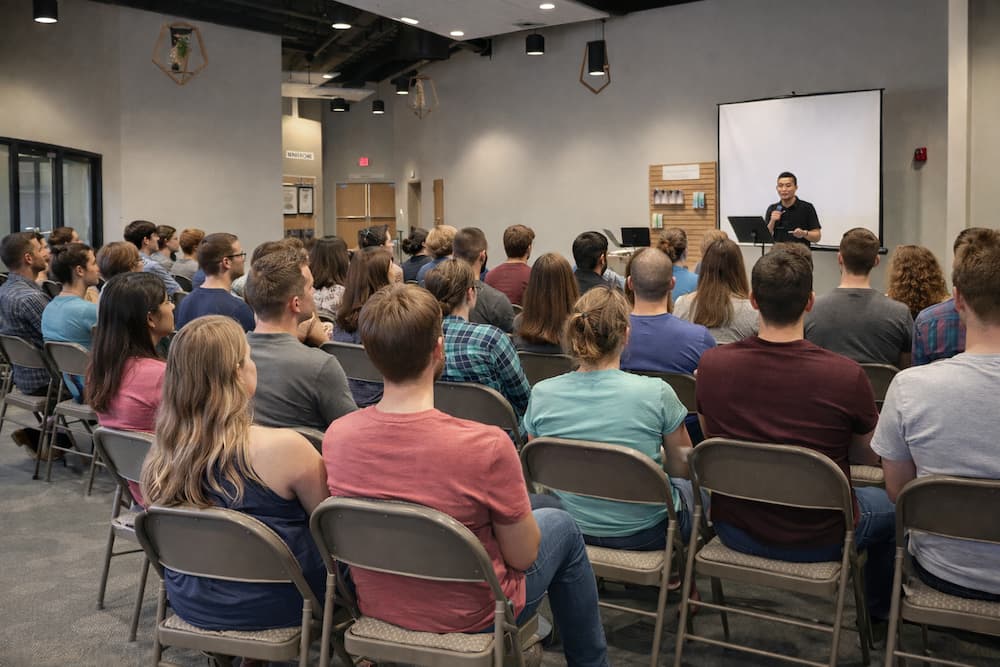Practical Application of Online Giving
Digital payment technologies are here to stay and they can be used to further the kingdom and fulfill the Great Commission. So, the only question that remains is this: What are you waiting for?

Once you and your church understand God’s calling to generosity and growth for the sake of reaching more people, the next phase is to create a practical plan. Again, this usually starts with the leadership. It’s important to be able to talk about how your church is going to do its part to fulfill the Great Commission. Will you:
- Build a bigger building to reach more people in your community?
- Plant new churches in your region?
- Support a certain number of full-time missionaries in various places around the globe?
- Strive to meet the practical needs of the poor and vulnerable in your city?
There isn’t a right or wrong answer, and it may be that your vision incorporates more than one goal. Every church has its own personality, and each area has its own unique needs. But as a leader, it’s important to be able to communicate what all this generosity is for.
For example, if you’ve decided God is calling your congregation to expand into a larger space, you’ll need to buy land, plan your building site, and work through the long construction process to get it done. After meeting with real estate agents, architects, contractors, and the like, you’ll have a budget. That’s your financial goal, at least in the short-term. Communicate that goal. Communicate your progress. Communicate how this new building will help you be the hands and feet of Jesus in your community. People don’t usually get excited about a building; they get excited—and motivated to give—when they can see how that building will be a blessing to themselves and others.
Using and Incorporating Tech for Giving
Online giving, mobile giving, and text-to-give are helpful tools to help people in your church translate the generosity that Scripture teaches and their hearts have aligned with into the real world.
Once everyone is on board with your church’s plan to build something for the kingdom, these digital tools provide a pathway to success. But remember—they’re only tools. They remove much of the friction in a giving or fundraising transaction, but true generosity always begins in the heart.
Here are a few recommendations for implementing new giving technology to your congregation.
- Don’t assume one size fits all. Not everyone will be comfortable with text-to-give, and not everyone will want to give through an app. Be sure people know they can still give on the church’s website (the old-fashioned way) or by check or cash in the offering plate (the really old-fashioned way).
- Show people how to use the technology. I suggest demonstrating from the front of your church during a service. Walk people through setup and giving. Show them how easy it can be. Be sure to have a tech-savvy person available for those who need extra help afterward.
- Emphasize the reason for increased generosity. Remind your people what Scripture says and what your goals are as a community of faith. Giving can change everything, but it’s not really about money, and people should know that.
- Go all in on recurring giving. If there is any single key to increased generosity wrought by technology, this is it. When people can decide ahead of time what they will give and know that they’ll never miss a donation, everyone wins.
Embracing the New
The church has a long track record of embracing technology to serve the kingdom. We Christians might not always be the first to adopt new tech, but when we do adopt it, we’re quick to see the tremendous potential.
In the heyday of radio, preachers clamored to the airwaves to proclaim the good news of Jesus Christ. When television rolled in, there were suddenly shows dedicated to sharing the gospel with the lost. And, of course, for the last few decades, the internet has been a vibrant place for all the above.
Digital payment technologies are here to stay—at least until they’re supplanted by something better—and they can be used to further the kingdom and fulfill the Great Commission. So, the only question that remains is this: What are you waiting for?
Sign Up for Product Updates
Once you and your church understand God’s calling to generosity and growth for the sake of reaching more people, the next phase is to create a practical plan. Again, this usually starts with the leadership. It’s important to be able to talk about how your church is going to do its part to fulfill the Great Commission. Will you:
- Build a bigger building to reach more people in your community?
- Plant new churches in your region?
- Support a certain number of full-time missionaries in various places around the globe?
- Strive to meet the practical needs of the poor and vulnerable in your city?
There isn’t a right or wrong answer, and it may be that your vision incorporates more than one goal. Every church has its own personality, and each area has its own unique needs. But as a leader, it’s important to be able to communicate what all this generosity is for.
For example, if you’ve decided God is calling your congregation to expand into a larger space, you’ll need to buy land, plan your building site, and work through the long construction process to get it done. After meeting with real estate agents, architects, contractors, and the like, you’ll have a budget. That’s your financial goal, at least in the short-term. Communicate that goal. Communicate your progress. Communicate how this new building will help you be the hands and feet of Jesus in your community. People don’t usually get excited about a building; they get excited—and motivated to give—when they can see how that building will be a blessing to themselves and others.
Using and Incorporating Tech for Giving
Online giving, mobile giving, and text-to-give are helpful tools to help people in your church translate the generosity that Scripture teaches and their hearts have aligned with into the real world.
Once everyone is on board with your church’s plan to build something for the kingdom, these digital tools provide a pathway to success. But remember—they’re only tools. They remove much of the friction in a giving or fundraising transaction, but true generosity always begins in the heart.
Here are a few recommendations for implementing new giving technology to your congregation.
- Don’t assume one size fits all. Not everyone will be comfortable with text-to-give, and not everyone will want to give through an app. Be sure people know they can still give on the church’s website (the old-fashioned way) or by check or cash in the offering plate (the really old-fashioned way).
- Show people how to use the technology. I suggest demonstrating from the front of your church during a service. Walk people through setup and giving. Show them how easy it can be. Be sure to have a tech-savvy person available for those who need extra help afterward.
- Emphasize the reason for increased generosity. Remind your people what Scripture says and what your goals are as a community of faith. Giving can change everything, but it’s not really about money, and people should know that.
- Go all in on recurring giving. If there is any single key to increased generosity wrought by technology, this is it. When people can decide ahead of time what they will give and know that they’ll never miss a donation, everyone wins.
Embracing the New
The church has a long track record of embracing technology to serve the kingdom. We Christians might not always be the first to adopt new tech, but when we do adopt it, we’re quick to see the tremendous potential.
In the heyday of radio, preachers clamored to the airwaves to proclaim the good news of Jesus Christ. When television rolled in, there were suddenly shows dedicated to sharing the gospel with the lost. And, of course, for the last few decades, the internet has been a vibrant place for all the above.
Digital payment technologies are here to stay—at least until they’re supplanted by something better—and they can be used to further the kingdom and fulfill the Great Commission. So, the only question that remains is this: What are you waiting for?
podcast transcript
Once you and your church understand God’s calling to generosity and growth for the sake of reaching more people, the next phase is to create a practical plan. Again, this usually starts with the leadership. It’s important to be able to talk about how your church is going to do its part to fulfill the Great Commission. Will you:
- Build a bigger building to reach more people in your community?
- Plant new churches in your region?
- Support a certain number of full-time missionaries in various places around the globe?
- Strive to meet the practical needs of the poor and vulnerable in your city?
There isn’t a right or wrong answer, and it may be that your vision incorporates more than one goal. Every church has its own personality, and each area has its own unique needs. But as a leader, it’s important to be able to communicate what all this generosity is for.
For example, if you’ve decided God is calling your congregation to expand into a larger space, you’ll need to buy land, plan your building site, and work through the long construction process to get it done. After meeting with real estate agents, architects, contractors, and the like, you’ll have a budget. That’s your financial goal, at least in the short-term. Communicate that goal. Communicate your progress. Communicate how this new building will help you be the hands and feet of Jesus in your community. People don’t usually get excited about a building; they get excited—and motivated to give—when they can see how that building will be a blessing to themselves and others.
Using and Incorporating Tech for Giving
Online giving, mobile giving, and text-to-give are helpful tools to help people in your church translate the generosity that Scripture teaches and their hearts have aligned with into the real world.
Once everyone is on board with your church’s plan to build something for the kingdom, these digital tools provide a pathway to success. But remember—they’re only tools. They remove much of the friction in a giving or fundraising transaction, but true generosity always begins in the heart.
Here are a few recommendations for implementing new giving technology to your congregation.
- Don’t assume one size fits all. Not everyone will be comfortable with text-to-give, and not everyone will want to give through an app. Be sure people know they can still give on the church’s website (the old-fashioned way) or by check or cash in the offering plate (the really old-fashioned way).
- Show people how to use the technology. I suggest demonstrating from the front of your church during a service. Walk people through setup and giving. Show them how easy it can be. Be sure to have a tech-savvy person available for those who need extra help afterward.
- Emphasize the reason for increased generosity. Remind your people what Scripture says and what your goals are as a community of faith. Giving can change everything, but it’s not really about money, and people should know that.
- Go all in on recurring giving. If there is any single key to increased generosity wrought by technology, this is it. When people can decide ahead of time what they will give and know that they’ll never miss a donation, everyone wins.
Embracing the New
The church has a long track record of embracing technology to serve the kingdom. We Christians might not always be the first to adopt new tech, but when we do adopt it, we’re quick to see the tremendous potential.
In the heyday of radio, preachers clamored to the airwaves to proclaim the good news of Jesus Christ. When television rolled in, there were suddenly shows dedicated to sharing the gospel with the lost. And, of course, for the last few decades, the internet has been a vibrant place for all the above.
Digital payment technologies are here to stay—at least until they’re supplanted by something better—and they can be used to further the kingdom and fulfill the Great Commission. So, the only question that remains is this: What are you waiting for?
VIDEO transcript
Once you and your church understand God’s calling to generosity and growth for the sake of reaching more people, the next phase is to create a practical plan. Again, this usually starts with the leadership. It’s important to be able to talk about how your church is going to do its part to fulfill the Great Commission. Will you:
- Build a bigger building to reach more people in your community?
- Plant new churches in your region?
- Support a certain number of full-time missionaries in various places around the globe?
- Strive to meet the practical needs of the poor and vulnerable in your city?
There isn’t a right or wrong answer, and it may be that your vision incorporates more than one goal. Every church has its own personality, and each area has its own unique needs. But as a leader, it’s important to be able to communicate what all this generosity is for.
For example, if you’ve decided God is calling your congregation to expand into a larger space, you’ll need to buy land, plan your building site, and work through the long construction process to get it done. After meeting with real estate agents, architects, contractors, and the like, you’ll have a budget. That’s your financial goal, at least in the short-term. Communicate that goal. Communicate your progress. Communicate how this new building will help you be the hands and feet of Jesus in your community. People don’t usually get excited about a building; they get excited—and motivated to give—when they can see how that building will be a blessing to themselves and others.
Using and Incorporating Tech for Giving
Online giving, mobile giving, and text-to-give are helpful tools to help people in your church translate the generosity that Scripture teaches and their hearts have aligned with into the real world.
Once everyone is on board with your church’s plan to build something for the kingdom, these digital tools provide a pathway to success. But remember—they’re only tools. They remove much of the friction in a giving or fundraising transaction, but true generosity always begins in the heart.
Here are a few recommendations for implementing new giving technology to your congregation.
- Don’t assume one size fits all. Not everyone will be comfortable with text-to-give, and not everyone will want to give through an app. Be sure people know they can still give on the church’s website (the old-fashioned way) or by check or cash in the offering plate (the really old-fashioned way).
- Show people how to use the technology. I suggest demonstrating from the front of your church during a service. Walk people through setup and giving. Show them how easy it can be. Be sure to have a tech-savvy person available for those who need extra help afterward.
- Emphasize the reason for increased generosity. Remind your people what Scripture says and what your goals are as a community of faith. Giving can change everything, but it’s not really about money, and people should know that.
- Go all in on recurring giving. If there is any single key to increased generosity wrought by technology, this is it. When people can decide ahead of time what they will give and know that they’ll never miss a donation, everyone wins.
Embracing the New
The church has a long track record of embracing technology to serve the kingdom. We Christians might not always be the first to adopt new tech, but when we do adopt it, we’re quick to see the tremendous potential.
In the heyday of radio, preachers clamored to the airwaves to proclaim the good news of Jesus Christ. When television rolled in, there were suddenly shows dedicated to sharing the gospel with the lost. And, of course, for the last few decades, the internet has been a vibrant place for all the above.
Digital payment technologies are here to stay—at least until they’re supplanted by something better—and they can be used to further the kingdom and fulfill the Great Commission. So, the only question that remains is this: What are you waiting for?




























